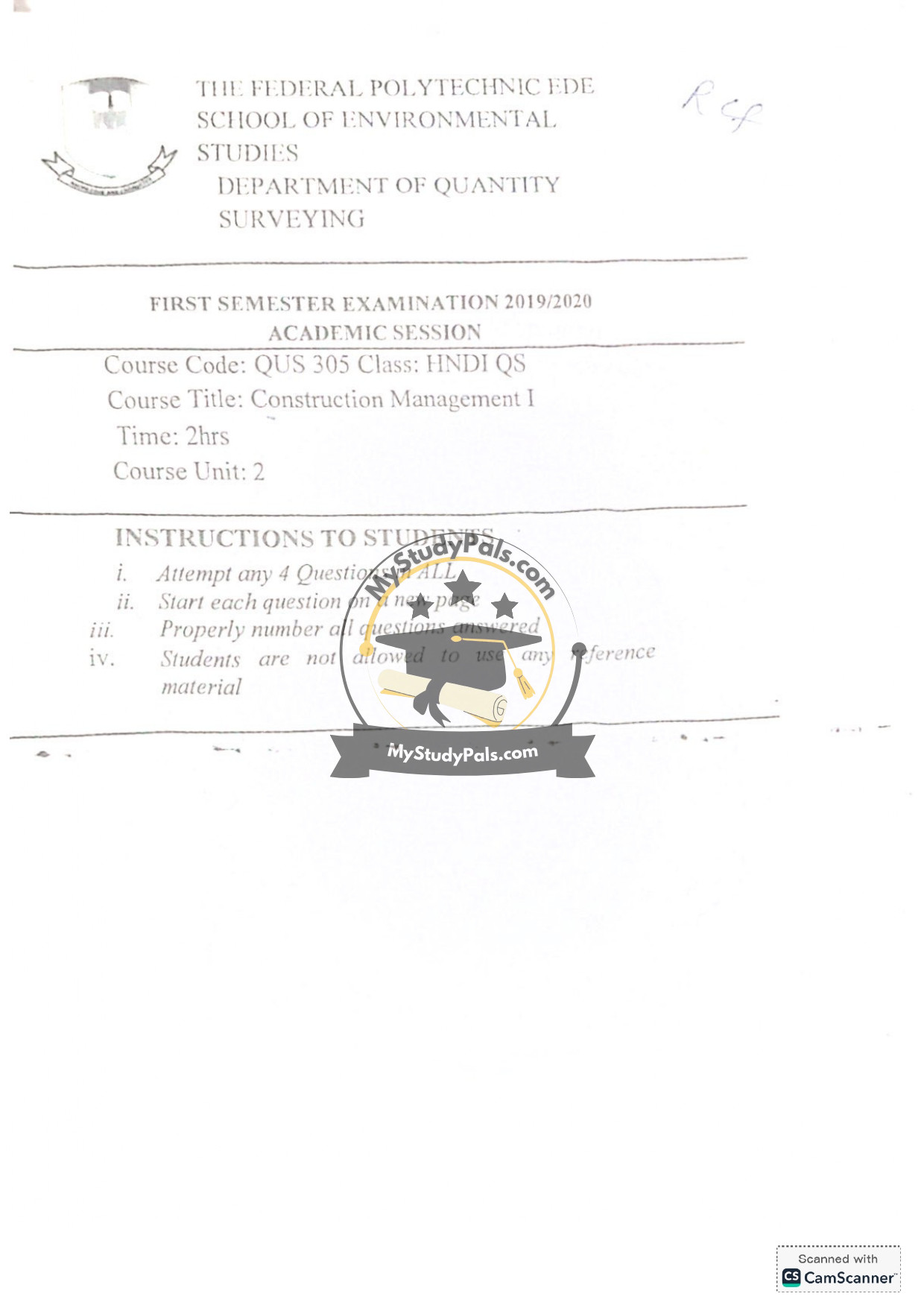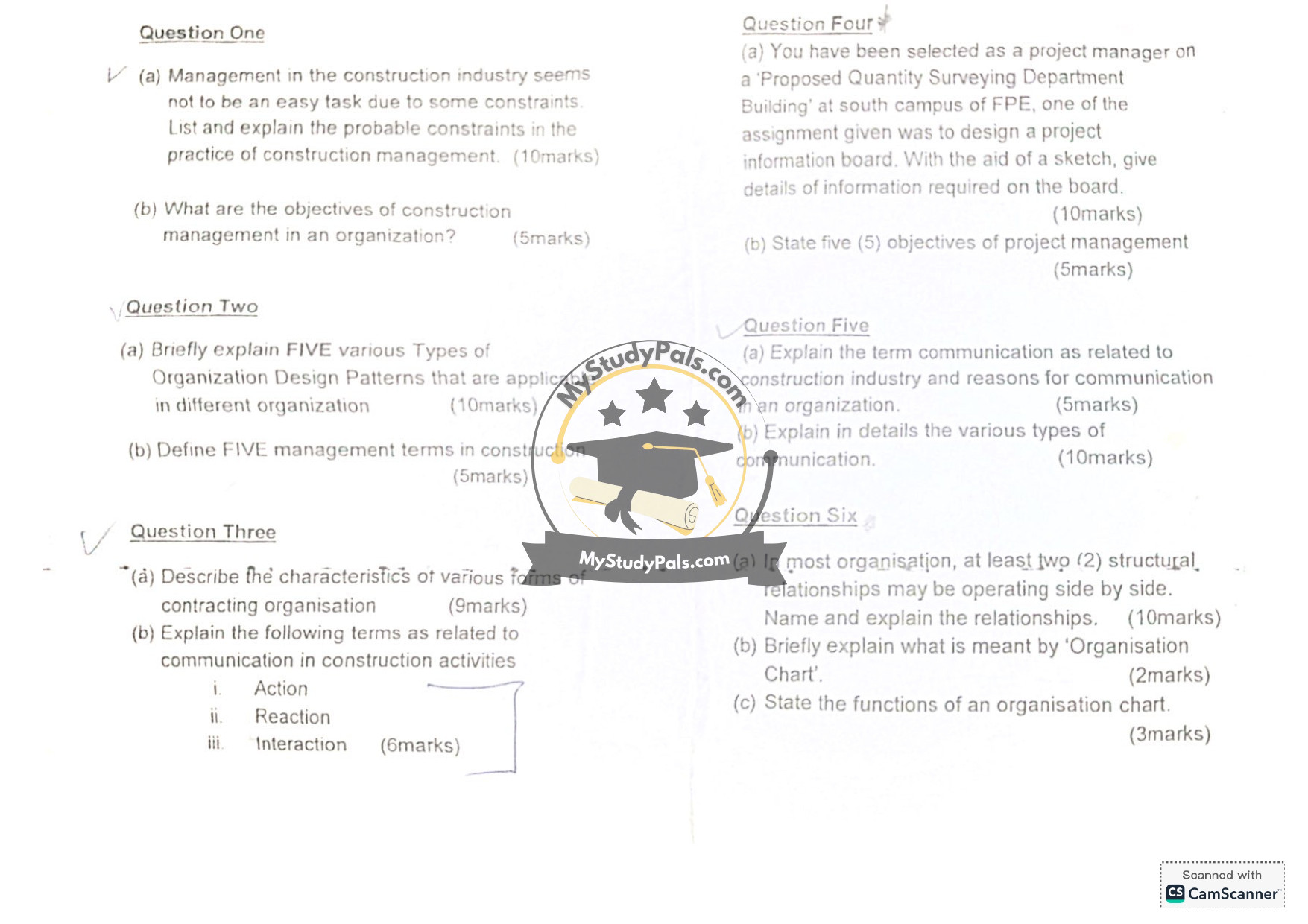ANWSER
Question One
(a) Probable constraints in the practice of construction management:
1. Time Constraints: Tight deadlines can lead to rushed work and compromised quality.
2. Budget Limitations: Financial restrictions may limit resources or scope of the project.
3. Resource Availability: Shortage of skilled labor, materials, or equipment can delay progress.
4. Regulatory Compliance: Adhering to building codes and legal requirements can be complex.
5. Communication Barriers: Poor communication among stakeholders can cause misunderstandings.
6. Environmental Factors: Weather conditions or site-specific challenges may disrupt schedules.
7. Technological Gaps: Lack of modern tools or software can hinder efficiency.
8. Stakeholder Conflicts: Differing expectations among clients, contractors, and teams can create disputes.
9. Safety Risks: Ensuring worker safety while maintaining productivity is a constant challenge.
10. Project Complexity: Large-scale or intricate designs require meticulous coordination.
(b) Objectives of construction management in an organization:
1. Ensure projects are completed on time, within budget, and to required quality standards.
2. Optimize resource allocation (labor, materials, equipment).
3. Mitigate risks and resolve issues proactively.
4. Foster effective communication among all stakeholders.
5. Achieve client satisfaction by meeting project goals.
—
Question Two
(a) Types of Organization Design Patterns:
1. Functional Structure: Departments grouped by specialization (e.g., engineering, finance).
2. Divisional Structure: Teams organized by projects, products, or geographic locations.
3. Matrix Structure: Hybrid of functional and divisional, with dual reporting lines.
4. Flatarchy: Decentralized with few hierarchical levels, promoting innovation.
5. Network Structure: Relies on external partnerships and outsourcing for flexibility.
(b) Five management terms in construction:
1. Scope of Work: Defined tasks and deliverables for a project.
2. Critical Path Method (CPM): Scheduling technique to identify key tasks.
3. Change Order: Formal modification to the original contract terms.
4. Punch List: Final checklist of minor fixes before project completion.
5. Stakeholder: Any party with an interest in the project (e.g., client, contractor).
—
Question Four
(a) Project Information Board details (sketch description):
The board should include:
1. Project Title: “Proposed Quantity Surveying Department Building.”
2. Location: South Campus, FPE.
3. Client/Owner: Federal Polytechnic Ede.
4. Contractor: Name of the construction firm.
5. Project Manager: Your name/contact.
6. Duration: Start and expected completion dates.
7. Key Milestones: Major phases (e.g., foundation, framing).
8. Safety Protocols: Emergency contacts and rules.
9. Project Scope: Brief description of the building’s purpose.
10. Visuals: Site layout or architectural rendering.
(b) Objectives of project management:
1. Deliver projects on schedule and within budget.
2. Ensure quality standards are met.
3. Manage risks and resolve issues efficiently.
4. Facilitate clear communication among teams.
5. Achieve stakeholder satisfaction.
—
Question Five
(a) Communication in construction:
– Definition: Exchange of information among stakeholders to ensure project success.
– Reasons for communication:
1. Coordinate tasks and resources.
2. Clarify roles and responsibilities.
3. Resolve conflicts promptly.
4. Ensure safety and compliance.
5. Keep clients informed.
(b) Types of communication:
1. Verbal: Face-to-face meetings, phone calls.
2. Written: Emails, reports, contracts.
3. Visual: Blueprints, charts, schedules.
4. Non-verbal: Body language, gestures.
5. Digital: Project management software, BIM tools.
—



